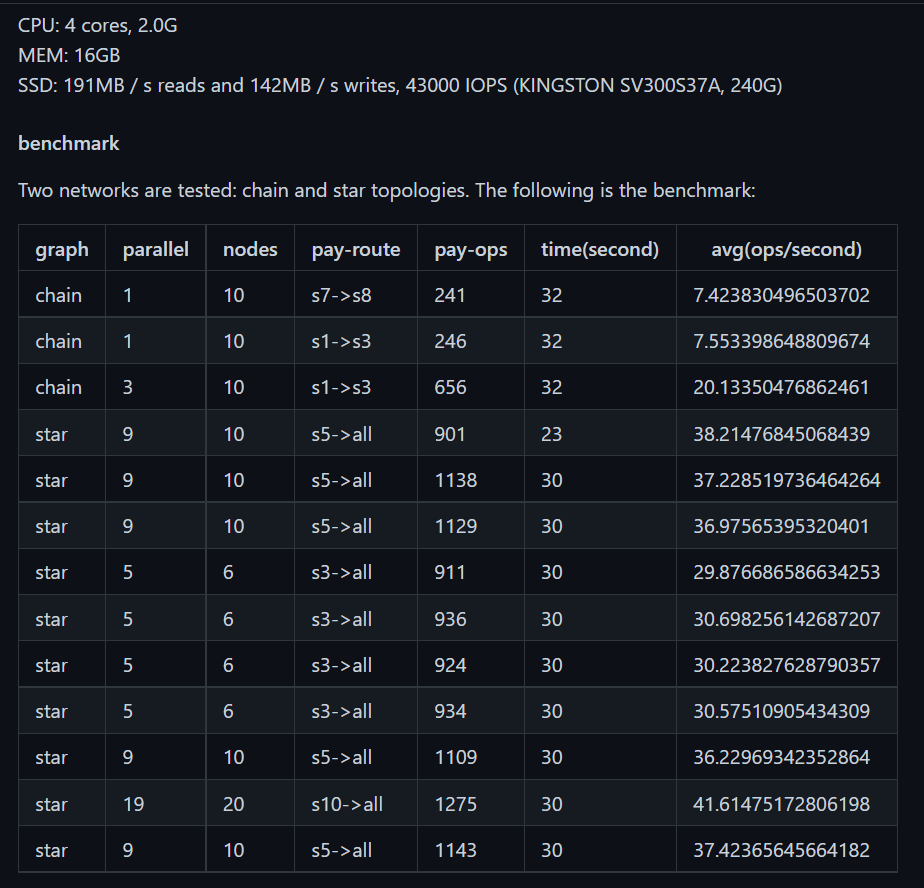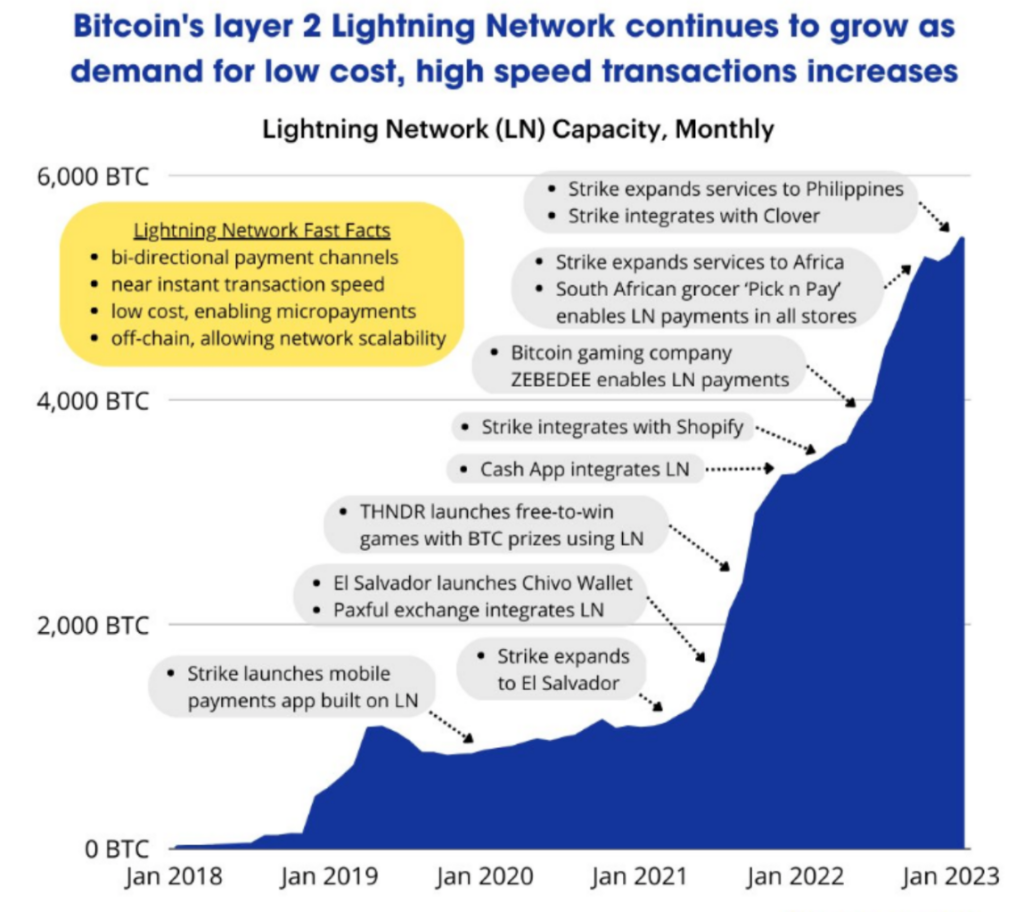- May 24, 2023
- Posted by: admin
- Category: BitCoin, Blockchain, Cryptocurrency, Investments
Summary
The Lightning Network has been one of the most promising ways to solve problems with scaling and the speed of transactions in the cryptocurrency world. It is a second-tier solution built on top of the Bitcoin blockchain, designed to solve the issues of scalability and transaction speed on the mainstream blockchain. The Lightning Network allows for nearly instant transactions with lower fees, making it a promising solution for micropayments and other use cases.
OmniBOLT is constructed on top of OmniLayer, which enables tokens to be created and transmitted via the Lightning Network. This capability enhances the flexibility and accessibility of the Lightning Network to a broader range of users. Furthermore, the incorporation of smart contracts in OmniBOLT is anticipated to offer additional flexibility to the Lightning Network and facilitate more intricate contracts. This feature is particularly beneficial for high-frequency trading, which was previously unfeasible on the primary blockchain due to extended transaction times and exorbitant fees.
I am enthusiastic about utilizing the Lightning Network’s technology to conduct transactions using stablecoins. With the integration of Omnilayer and OmniBOLT, can the BTC public chain ecosystem experience significant growth? Note: The information presented in the following text is derived from publicly available sources on the internet.
Chronological Events of Omnibolt and Lightning Network
To clarify, OmniBOLT is not simply a reinvention of the Lightning Network, but rather an extensive expansion that enables a wide range of innovative possibilities. For a concise overview of the Lightning Network and its development, interested readers can refer to[1]
In 2015, two papers officially invented the Lightning Network:
- Christian Decker, Roger Wattenhofer, A Fast and Scalable Payment Network with Bitcoin Duplex Micropayment Channels[2]
- Joseph Poon, Thaddeus Dryja, The Bitcoin Lightning Network: Scalable Off-Chain Instant Payments[3]
In 2016, BOLT protocol was researched by multiple organizations and officially released together.
2017, Bitcoin’s SegWit-based soft fork in 2017, which freed up space for more transactions to fit in each block and solved the Bitcoin bug called transaction malleability.
2018, Lightning Labs finally launched a beta version of its Lightning Network implementation into the Bitcoin mainnet.
2020, OmniBOLT was proposed in the omni community.
2022, Synonym sent the first USDT stablecoin transaction on the Lightning Network using the proof-of-concept tool released by OmniBOLT[4].
In 2022, Omnilayer updated its core to support ”sendToMany”, which solves the problem that tokens are not conducive to channel establishment at the settlement layer, and can greatly simplify the protocol of OmniBOLT, so that OmniBOLT can construct node communication like BOLT.
Another significant milestone in the timeline is the release of Omnilayer in 2014, which facilitated the issuance of USDT on its platform. As of 2022, USDT has grown to become the third-largest cryptocurrency asset.
This development highlights the role of OmniLayer in providing support for the settlement layer of the Lightning Network to accommodate diverse assets. With the advent of OmniBOLT, USDT transactions within the Bitcoin ecosystem can now be executed rapidly and inexpensively via channel payments. It could be argued that this achievement provides a solid foundation for the ecosystem’s growth.
Protocol and Github Repository
OmniBOLT is currently under active development. Its Github repository has gained more than 900 stars. As can be seen from the architecture diagram, the software focuses on building a lightning network on self-custodial wallets for mobile devices.
What is interesting is that the nodes and channels of each asset form different logical networks, and do not occupy bandwidth and computing resources with each other, so that the transaction of one token will not block the transaction of another token. This is different from the various layer 2 rollup solutions on Ethereum. In the rollup solution, all assets, contracts, and transactions pass through one place, and the architecture does not have the ability to scale up.

Speaking of the scaleup capability, the main purpose of the Layer 2 network is to solve the scalability problem. Additional capacity can be obtained by simply adding nodes. Let’s look at a set of test data from an OmniBOLT git repo.
At a lower I/O speed computer, a single liquidity node reaches 30~50 transactions per second. A distributed network naturally has scaleup ability: for example, by adding additional 100 nodes to the network, we will get 3k ~ 5k transactions per second, which has greatly exceeded the processing capacity of Visa.

How does the implementation of OmniBOLT drive the advancement of the Bitcoin ecosystem?
Problem
At present, although the scale of the lightning network is constantly growing, its total liquidity is less than 0.5% of the Ether in DeFi contracts[5]. This is still the case without counting the value of various tokens and assets on Ethereum. It shows that the ecology of Bitcoin still has a lot of room for growth, and we need a tool to release this growth.

The above graph shows that Strike has helped the growth of the Lightning Network (inset). Can OmniBOLT’s recently released OBWallet also promote growth again?
A wallet alone is not enough. The ability to securely issue and trade various assets is a key growth factor. Lightning Network, OmniBOLT and Wallet provide key technical support.
Payment
The price of Bitcoin itself is volatile, so it is not a perfect payment medium. Strike offers its solution. In its software, users are allowed to exchange fiat into Bitcoin, and then use the fast channel of the Lighting network to pay bitcoin to the payee, and then exchange it into fiat again at the payee. “Because the payment is fast enough, changes in the exchange rate will not have much impact”.
But what if a payment network could directly support a fiat-pegged stable payment medium? It will completely solve the problem of medium instability, and also reduce a lot of exchange costs.
Exchange(HFT)
Around 2015, Omnilayer released the DEX of the Bitcoin network. However, due to the high gas fee on the main network and the slow transaction speed, gas fees are required for submitting orders, canceling orders, and closing orders, so it is difficult for Omnilayer’s DEX to be widely accepted. In particular, broadcast orders can not guarantee a deal. In other words, although DEX has the advantage of low slippage, it does not have the certainty of closing. This problem was not solved until AMM(Automatic Market Making) model was invented on Ethereum, i.e. Uniswap.

Source: https://www.theblock.co/data/decentralized-finance/dex-non-custodial/dex-to-cex-spot-trade-volume
DEX and Swap have developed rapidly on Ethereum. In the past year, the ratio of transaction volume to CEX has fluctuated in this range from a low of 8% to a high of about 16%. However, Bitcoin, as the largest crypto asset, is indeed excluded, and investors/speculators can only trade wrapped-bitcoin in Swaps/DEXs, which is unsatisfying.
USDT’s triumph on the Bitcoin network via the Omnilayer protocol has demonstrated the viability of conducting Bitcoin transactions and pricing without the need for CEX transfers (with a trading volume of up to 20 billion USD per 24 hours). The only challenge left to resolve is the issue of transaction speed, which is precisely the problem that the OmniBOLT protocol seeks to address.
Pros, Cons and the Future
Pros
The fact that the Lightning Network can work with tokens is essential because it means it can be used for more than just Bitcoin. Tether (USDT) is one of the most important tokens that will work with the OmniBOLT Lightning Network. Now with OmniBOLT, the stablecoin has risen again on the Bitcoin network, giving micropayments and other uses even more potential. USDT is a stablecoin that is pegged to the US dollar and is one of the most widely used tokens in the cryptocurrency space. Its ability to work on the Lightning Network is likely to make it more useful and popular in the market.
The OmniBOLT’s smart contract feature is expected to make the Lightning Network more flexible, which is important as the technology continues to evolve and new use cases are discovered. Based on zero-knowledge proofs, the smart contract feature gives users more security and privacy. This feature is especially important for making the public Bitcoin network greener, as there are more and more worries about how much energy it uses. The Lightning Network’s ability to support micropayments and other use cases is expected to cut down on the need for on-chain transactions, which will make the Bitcoin network much more energy efficient.
Cons
- Vague government regulation. If the regulation does not allow the circulation of tokens, people will hesitate and will not accept the use of OmniBOLT. Although the regulation gradually accepts the circulation of BTC, it is much more cautious about stablecoins. This is why crypto payments cannot really challenge Visa at the moment.
- I didn’t see the description about Watch Tower (maybe you can use lightning’s watch tower, because Omnilayer Tx is essentially Bitcoin Tx)
Future
In conclusion, the Lightning Network and the OmniBOLT are bringing flexibility and accessibility to the cryptocurrency space. The OmniBOLT Lightning Network’s ability to support a variety of tokens and contracts are allowing for greater potential for micropayments, high-frequency trading, and other use cases that were previously not feasible on the main blockchain. As the technology continues to evolve and new use cases are discovered, we can expect to see even more innovative solutions built around the Lightning Network and OmniBOLT. The future of cryptocurrency transactions looks promising indeed.
References
[1] What is the Lightning Network in Bitcoin, and how does it work?,
https://cointelegraph.com/bitcoin-for-beginners/what-is-the-lightning-network-in-bitcoin-and-how-does-it-work
[2] Christian Decker, Roger Wattenhofer, A Fast and Scalable Payment Network with Bitcoin Duplex Micropayment Channels,
https://link.springer.com/chapter/10.1007/978-3-319-21741-3_1
[3] Joseph Poon, Thaddeus Dryja, The Bitcoin Lightning Network: Scalable Off-Chain Instant Payments, https://lightning.network/lightning-network-paper.pdf
[4] USDT Pilot Brings Tokens to Bitcoin Lightning,
https://bitcoinmagazine.com/business/usdt-pilot-brings-tokens-to-bitcoin-lightning
[5] Bitcoin Lightning Network Growth is organic coming from real world adoption,
https://cointelegraph.com/news/bitcoin-lightning-network-growth-is-organic-coming-from-real-world-adoption
[6] OmniBOLT #6: Automatic Market Maker model,
https://github.com/omnilaboratory/OmniBOLT-spec/blob/master/OmniBOLT-06-Automatic-Market-Maker-and-DEX.md
The post Omnibolt and Lightning Network: unlocking the future of cryptocurrency transactions appeared first on CryptoSlate.
